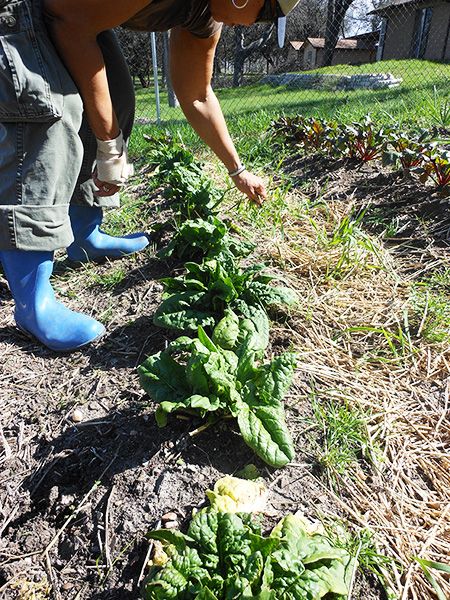Temperatures are finally dropping, making November a perfect time to work in your garden. While most fall and winter crops should be sown in September and October, due to Central Texas’ mild winters, there are still many plants you can start throughout the month. These include a number of plants from the allium, or onion family, as well as a wide range of greens.
Garlic: Garlic is easy to grow and produces numerous bulbs. It is frost tolerant and can be planted up to Thanksgiving. Beyond its intense flavor and culinary uses, “the stinking rose” is good in the garden as an insect repellent, and it has been used for centuries as a home remedy for infections and other ailments. Purchase bulbs from a mail order seed company or nursery. If you buy garlic at the grocery store, make sure it is organic or its bulbs might not sprout. Ensure that your soil is well-drained and has plenty of organic matter. Break the bulbs apart, and plant the cloves four inches apart and two inches deep, in their upright position so that the wide root side faces down and the pointed end faces up.
Shallots: Common in French cuisine, shallots taste like a milder version of an onion with a hint of garlic. They can also be planted until Thanksgiving. They can be grown from seed or from a set, which is a grouping of small individual shallot bulbs generally purchased from a nursery. Before planting the shallot set, prepare the garden as you would for onions or garlic by creating a well-draining raised bed amended with compost. In growing from sets, plant each shallot set individually 6-8 inches apart and one inch deep.
Green Onions: Ideal for growing in small spaces, green onions add a fresh, pungent flavor of onion in your salads, soups and other dishes. They are essentially immature onions and are the green shoots that come up before an onion bulb begins to form. Green onions can be planted through mid-November. If planting from seed, be patient and don’t forget to water, as it can take up to a month for the seeds to germinate.
Asian Greens: Common Asian Greens include bok choy, pak choy, wombok (Chinese cabbage), mizuna, and mustard spinach. They are fast growing plants and are excellent sources of calcium and vitamins A, C and K. Just a small plot of garden space can yield a bountiful assortment of these leafy greens and crisp stems. All Asian greens grow best in moist, fertile, well-drained soil. Sow seeds about two inches apart and a quarter inch deep, then water well to settle the seeds into the soil. After seeds germinate (often in less than five days), gradually thin them to proper spacing. Large Chinese cabbage, Chinese broccoli and flowering mustard should be thinned to 14 inches apart, but small bok choy plants do well with just six inches between plants.
Lettuce: Relatively pest free, lettuce grows best when the soil is kept constantly moist and when outside temperatures range between 45 and 75 degrees Fahrenheit, making it a perfect vegetable for winter gardens. You can try growing leaf lettuce or lettuce heads. To add a burst of color to your garden, you can choose from a number of red-leafed varieties. Sow lettuce seeds a quarter of an inch deep and one inch apart in rows or squares, or simply broadcast them over the bed.
Radish: Crisp, peppery radishes add instant zing to any dish, whether sliced raw as a garnish, added to salads, or served as a side. They are a hardy, cool-season vegetable that can produce many crops each season because they grow so quickly. Direct sow seeds ½ inch to an inch deep and one inch apart in rows 12 inches apart. Thin to about two-inch spacings as crowded plants will not grow well. Keep the soil evenly moist but not waterlogged.
Spinach: One of the world’s most nutritious plants, spinach loves the cold and can be grown throughout winter. Like most vegetables, spinach grows best in well-draining soil rich in organic matter. Although spinach can be propagated indoors, it is not recommended, as seedlings are difficult to transplant. Sow seeds ½ inch to one inch deep, covering lightly with soil. Sow about 12 seeds per foot of row, or sprinkle over a wide row or bed. As the plants grow, thin them to four inches apart. Don’t wait for your spinach leaves to get too large before harvesting as bitterness will set in quickly after maturity.

